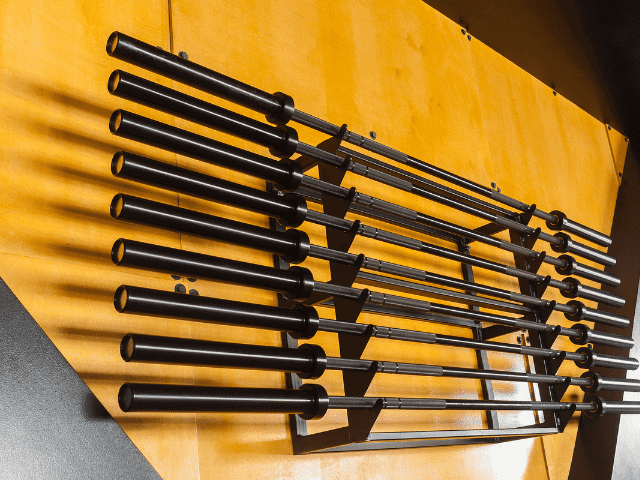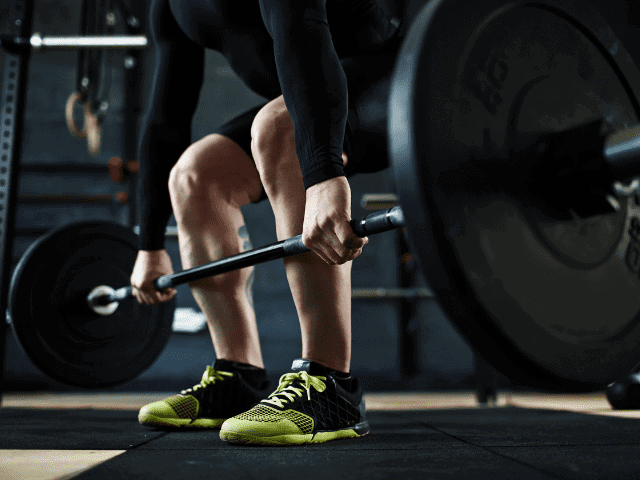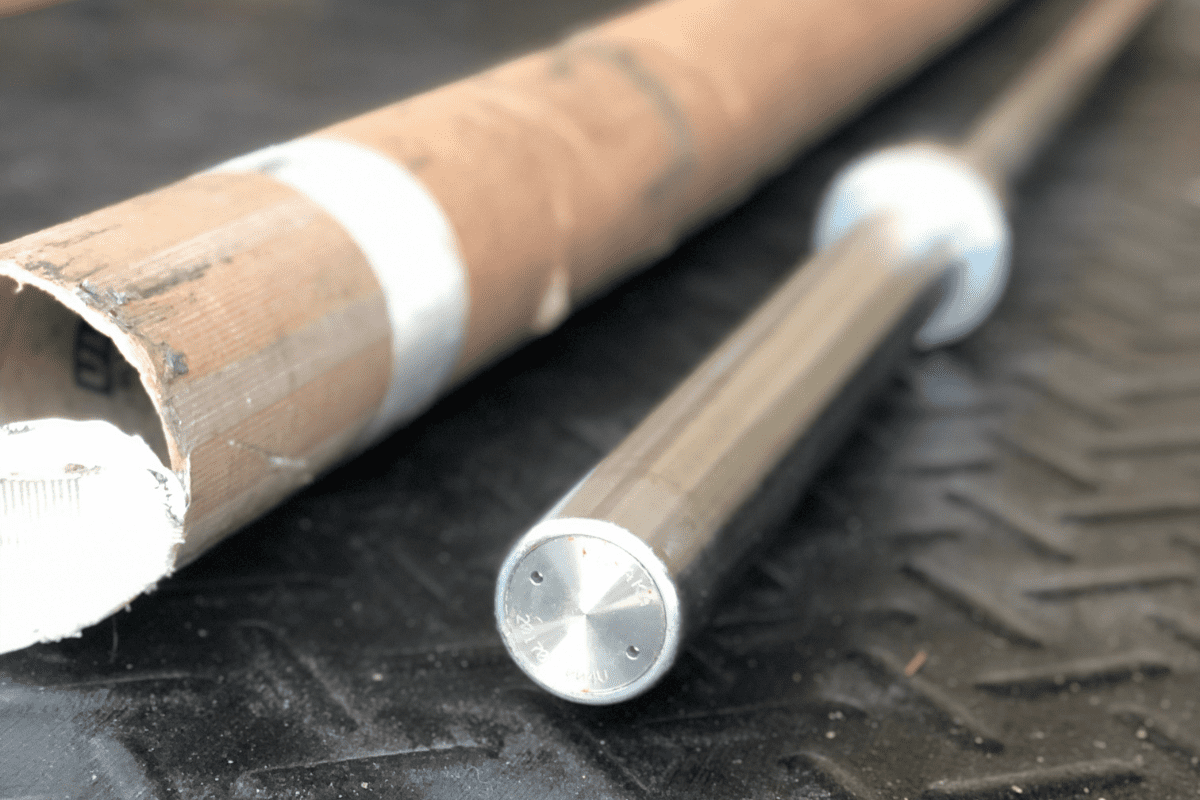How Much Does a Barbell Cost? (Budget, Mid-Level & Elite)
Perhaps the most used piece of equipment in any garage gym is the barbell. The barbell is so versatile that you can easily create entire workout programs with nothing more than a barbell and plates.
My best piece of advice for anyone starting a garage gym, regardless of budget, is to get the best barbell you can afford. You’re not going to regret investing your money into a great barbell.
With all that said, exactly how much does a barbell cost?
A barbell can range in price from roughly $100 all the way up to $1000. For most home gym owners, a barbell in the $250 – $450 price range will give you a high quality barbell that you’ll enjoy lifting with for a long, long time.
In this article, I’m going to show some examples of barbells in three different price ranges. Then, stick around after the reviews for my barbell buying tips so you don’t end up making a costly mistake.
Before we get into the recommendations though, let me briefly try to explain why some barbells cost more than others.
This article may contain affiliate links. If you purchase through one of these links I may earn a commission at no extra cost to you.
Why Do Some Barbells Cost More

Barbells that are more expensive are generally better in one of two ways (most likely both), the material it’s made with and the craftsmanship in which it’s built.
Materials
Even though all barbells look basically the same, they are made with different materials – both on the outside and inside.
One example is the finish on the barbell. A barbell with a stainless steel finish will be significantly more expensive than a chrome finish.
Another example is inside the bar. The part of the bar inside the sleeve that makes the bar rotate is made of either bearings or bushings.
Bearings typically rotate a bar better and smoother (although this isn’t always the case as you’ll find out with my Mid-Level bars) and they generally cost a bit more as well.
Craftsmanship
The same way craftsmanship affects the price of barbells is no different than with cars. It’s why a BMW generally costs more than a Honda.
It doesn’t mean Honda is a bad car, though, it just depends on what you need.
If you just need a barbell to get you to work and back home then — wait, did I cross my analogies? Anyway, I think you know where I’m going. A better built bar typically means higher labor costs and that cost ends up being reflected in the price.
With more expensive bars, you’re also usually paying for better customer support and in some cases lifetime warranties.
Finally, don’t forget, you’re paying for 45 pounds of steel. Steel itself is not cheap even if it’s not in the form of a barbell.
Now that we have a better understanding of why a barbell costs what it does, let’s look at some specific examples of budget, mid-level and high end barbells.
Barbell Price Ranges

Budget
These are all barbells that cost less than $200. Depending on your needs, you can pick up a barbell in this price range that will fit your training style. The key is really understanding what you really need from a bar and we’ll go over this further in just a second.
Mid-Level
Barbells in the mid-level price range cost between $200 and $500. You can pick up a really good quality barbell in this range regardless of your lifting style and what you’re looking for in a barbell.
Elite
This level is for barbells that cost over $500. This level of barbell is highlighted by two names that most serious lifters are familiar with, Uesaka and Eleiko. I’ll discuss whether it’s worth it for you to drop this kind of money on a barbell.
Along the way we’ll also discuss differences between bars like bearings vs bushings and how they affect the price of a barbell.
Without further ado, let’s discuss my favorite budget bars.
| Barbell Cost Quick Guide | ||||
| Brand | Barbell | Price Tier | Cost | Available At |
| Titan | Economy Olympic Barbell | Budget | $ | Titan |
| Cap | Barbell Classic | Budget | $ | Amazon |
| American Barbell | Performance Training Bar | Mid-Level | $$$ | American Barbell |
| Rogue | Ohio Bar – Stainless Steel | Mid-Level | $$$ | Rogue |
| Uesaka | Training Bar | High End | $$$$$ | Uesaka |
| Eleiko | Training Bar | High End | $$$$$ | Eleiko |
Budget Barbells (Under $200)
Barbells in this range are great for anyone who isn’t going to ask a whole lot out of their barbells. No Olympic lifts and not a lot of heavy deadlifts or squats.
The key to getting a great budget barbell is to get one that is as budget-friendly as possible, but will still hold on and not tear up for (at least) years to come. (A quality barbell can last you a decade or longer)
Titan Economy Olympic Barbell
Best Budget Bar
The Titan Economy Barbell is Titan’s entry-level barbell. For the price ($119 plus free shipping), you simply can’t beat this bar. At barely over $100, you’ll have a hard time finding a cheaper barbell, even at the big box stores.
More importantly, this bar holds up and will perform well for you for a long time.
Again, would I use it for Olympic lifts? No. But, for presses, rows, curls etc it will do a great job.
Cap Barbell Classic
Runner-Up Best Budget Bar
Cap has been making budget-friendly workout equipment for 40 years now. There is a good chance if you go to a big box store, you’re going to find Cap equipment.
Just to be honest, if you want to go as cheap as possible without buying a piece of junk this is your barbell. You can often catch these on sale online for less than $100.
Like the Titan Economy Bar, you have to have realistic expectations of how this barbell is going to perform. Don’t expect good rotation for Olympic lifts. Don’t expect it to last you forever if you abuse it.
However, this barbell can perform all of your basic lifts and if you take care of it – it will take care of you.
Mid-Level Barbells ($200 – $500)
The term “Mid-Level” really only refers to the price here. Both of the bars I’m mentioning here – The Ohio Bar from Rogue and the Olympic Performance Training Bar from American Barbell are excellent, excellent barbells.
These are both high-performance barbells that I’ve had share a weight room with Uesakas and Eleikos (which we’ll get to in a second) and they’ve held their own.
I said the price range for a good mid-level bar was $200 to $500 and both of these bars are priced toward the upper end of that range (American Barbell 425, Rogue 465), but in my opinion, are worth every penny.
American Barbell – Performance Training Bar
Best Mid-Level Barbell
I’ve worked in college weight rooms with Uesaka, Eleiko and Werksan and this American Barbell bar is one of the best barbells I’ve ever used.
Like the Ohio Bar, it also uses bushings, but the spin is so smooth you would never know it. The knurling is a perfect balance of grip without tearing your hands up and the whip is second to none.
When I left the school I was at where we were using these bars they were four years old and had gone through hundreds of workouts with hundreds and athletes and they were still in excellent condition.
The Ohio Bar – Stainless Steel
Runner-Up Mid Level Bar
Rogue makes a lot of really good equipment and perhaps the best thing that they make is the Stainless Steel Ohio Bar.
The bar works great for both Olympic lifts and Powerlifting movements like Deadlifts and Bench Press.
It’s a bushings bar (as opposed to using bearings) which is usually less than ideal for Olympic lifts because a bar with bushings typically doesn’t spin nearly as well. However, this bar has a smooth, consistent spin.
You can also save a few bucks (actually almost $100) if you elect to go with a chrome finish instead of the stainless steel.
Elite (Over $500)
This category has been dominated by Uesaka and Eleiko my whole life.
Generally, people fall into one of two camps as to which they feel is better, but most will agree these two companies are one and two when it comes to barbells. (Although I would love to try one of American Barbell’s high end bars to see how they compare)
Both of these bars are going to cost you close to $1000. There is no need to spend this much on a bar unless you’re taking you’re lifting very seriously.
You may notice that I’m selecting the training bars for both Uesaka and Eleiko and not their competition bars. The only real difference between the two is that the competition bars have a much more aggressive knurling – they’re not necessarily a superior overall bar.
Uesaka Training Bar
Best High End Barbell
I told myself that if I ever built out a home gym, I would get myself a Uesaka barbell.
And, that’s exactly what I did. It was the ultimate splurge and it was so worth it.
I’ve always felt Uesaka made a better, more consistent barbell than Eleiko.
Uesaka barbells are basically hand-made and the quality and detail in the craftsmanship is amazing. The rotation of the bar is so good that you almost can’t feel the plates on the bar.
Literally, everything about the bar is perfection.
Eleiko IWF Weightlifting Training Bar
Runner Up High End Barbell
I have Eleiko listed here as the runner-up, but don’t let that fool you. What this means is that I think an Eleiko barbell is the second-best barbell in the world. That’s still pretty good.
Eleiko barbells are absolutely great in every way – rotation, whip, knurling, etc.
The most impressive thing about them is perhaps their durability. I’ve known Eleikos in college weight rooms that were two decades old and still working great.
The edge, if you will, that I think Uesaka has over Eleiko is the rotation. Uesaka bars rotation is perfection. They never under-spin or over-spin. Eleiko bars spin tends to be slightly looser, if that makes sense, but that’s really being picky.
Barbell Buying Tips
Here are a couple of tips to keep in mind as you’re looking for and purchasing a barbell.
A Standard Barbell is 7 feet (84 inches)
The standard barbell that you’re probably familiar with that comes standard in all gyms is a 7-foot barbell that weighs 20kg (or 45 pounds).
What many people don’t even realize is that they make bars that are all different lengths and weights. Whether it’s a 5-foot barbell or a 10kg technique bar, it’s not that hard to purchase a bar that’s not the standard size if you’re not paying attention.
An “Olympic Barbell” Doesn’t Equal “Good For Olympic Lifts”
At some point in time, people started referring to all standard-sized barbells (that we just discussed) as a “Standard Olympic Barbell”.
However, this does not mean that they are necessarily good for Olympic Lifts which can be super confusing. If you want to do Olympic lifting, make sure you find a barbell that is designed to do so.
There are different parts of a barbell that make them better or worse for things like rotation and whip which determines whether they make good Olympic lifting bars.
Don’t Forget Shipping Costs
If you’re buying a barbell online, don’t forget to include shipping costs when comparison shopping. Shipping costs can be as high as $50 for a barbell.
On the other hand, if you’re buying a barbell in-store and not online, make sure you have a way to get a 7 foot long, 45-pound rod of steel back to your house.

